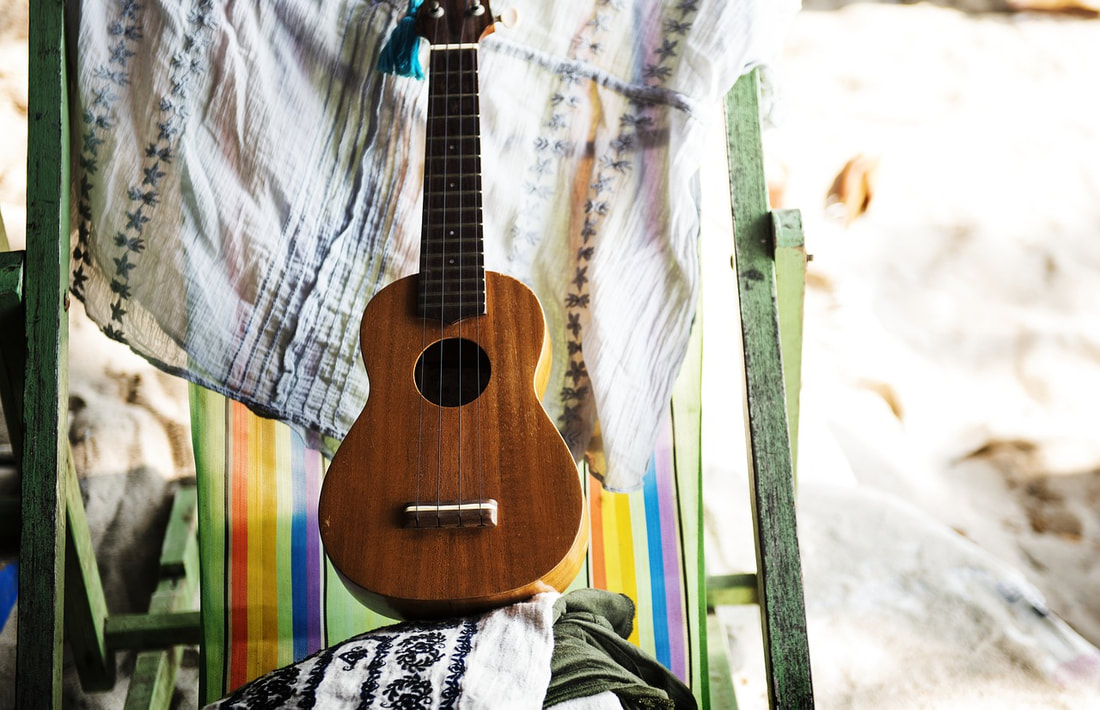|
No matter whether you’re a long-time musician, a new music student, or somewhere in between, people who are passionate about music often consider practice or performance an important part of daily life. However, travel can make practicing some traditional instruments difficult, leaving a musician on a trip without an outlet for creativity. If you are a musician who is planning to travel soon, but don’t want to sacrifice your ability to make music while away from home, the following six instruments are easy to take with you no matter where in the world you go. UkuleleA lightweight, hollow-body instrument commonly associated with the Hawaiian Islands, the ukulele has an appearance similar to that of a miniature acoustic guitar. It features four nylon strings and is usually made out of wood, though plastic models are also available. The ukulele comes in four sizes, with the 30-inch baritone being the largest and the traditional soprano being the smallest at just 20 inches long. The instrument is notable for being fun, inexpensive, and relatively easy to learn how to play. Hand drumsThere are many options for the percussionist who wants to take an instrument on the go. While they do not produce the same sound as the standard drum kit, hand drums like the West African djembe are a practical option for travel. Although traditional djembes are made from a goatskin stretched over a wooden body, a hardier, more functional option for the traveling drummer is a djembe made from fiberglass and equipped with a metal tuning key. Another ideal hand drum for the traveling musician is the mini cajon (Spanish for “box”), like those designed by the instrument company Meinl. While standard cajons are large enough for a drummer to sit on when playing, the miniature version from Meinl is just under 9 inches tall and almost 6 inches wide. These birch wood instruments have a warm tone and produce a crisp sound that make them ideal for accompanying other musicians on the road. Traveler guitarGuitarists of all ages can bring their craft with them wherever they go thanks to a modified version of the instrument designed specifically with the traveler in mind. One of the best acoustic options is the Backpacker guitar, made by C.F. Martin & Co. Available in both classical and steel string form, the instrument has a slimmed-down body design that makes it perfect for storing in a packed car or in the overhead compartment of a plane. Although the skinny body of the wooden guitar prevents it from producing the louder, fuller sound of a standard size acoustic, it has the benefit of weighing only two pounds, making it extremely portable and the perfect option to bring along on outdoor excursions. Alternatively, electric guitarists may be interested in the Ultra-Light Electric made by the company aptly named Traveler Guitar. At 3 pounds and just 28 inches long, the compact Ultra-Light produces a sound identical to a full-scale electric guitar and comes with a removable leg rest frame for functional lap playing. Musicians can pair the Ultra-Light with a mini amplifier and have the freedom to shred on the guitar anytime, anywhere. HarmonicaFor its size, the harmonica has a lot to offer the traveling musician as it spans three octaves and can play both single notes and chords. The typical beginner’s harmonica is the 10-hole diatonic type in the key of C—the version most often played in music genres like folk, blues, and pop. Though a harmonica needs to be in the right key in order to most effectively accompany other instruments during a song, these metal mouth organs are small enough to stuff in your pocket, making it easy to fit a set of them with a wide range of keys into a travel bag. OcarinaWhile many standard wind instruments like the flute and clarinet are already small enough to take on trips, they can be expensive to replace or repair if they are lost or damaged. For this reason, the ocarina is an excellent, economical option for a wind instrument player who wants to make music while traveling. Ocarinas are small, rounded vessel flutes with a total of 10 holes—two for the thumbs and eight for the fingers. They are made from plastic, terracotta, or even metal, and produce pure notes in a limited range. Some versions are highly decorative, and musicians may choose to wear them around the neck on a string for convenient carry. Your VoiceArguably the simplest and most often-forgotten instrument that musicians can take wherever they go is their voice. Through singing lessons and practice, musicians can learn to develop a controlled, melodic vocal tone welcome in any musical setting. Singing can also lead to a variety of emotional, social, and health benefits for the singer. Studies show that singing can strengthen the immune system, improve the body’s blood circulation, reduce stress, and even boost self-confidence. Additionally, singing in a group is a great way to make friends and enjoy the wonderful social aspect of music while on the road.
Comments are closed.
|
Photo used under Creative Commons from Marina K Caprara


 RSS Feed
RSS Feed
